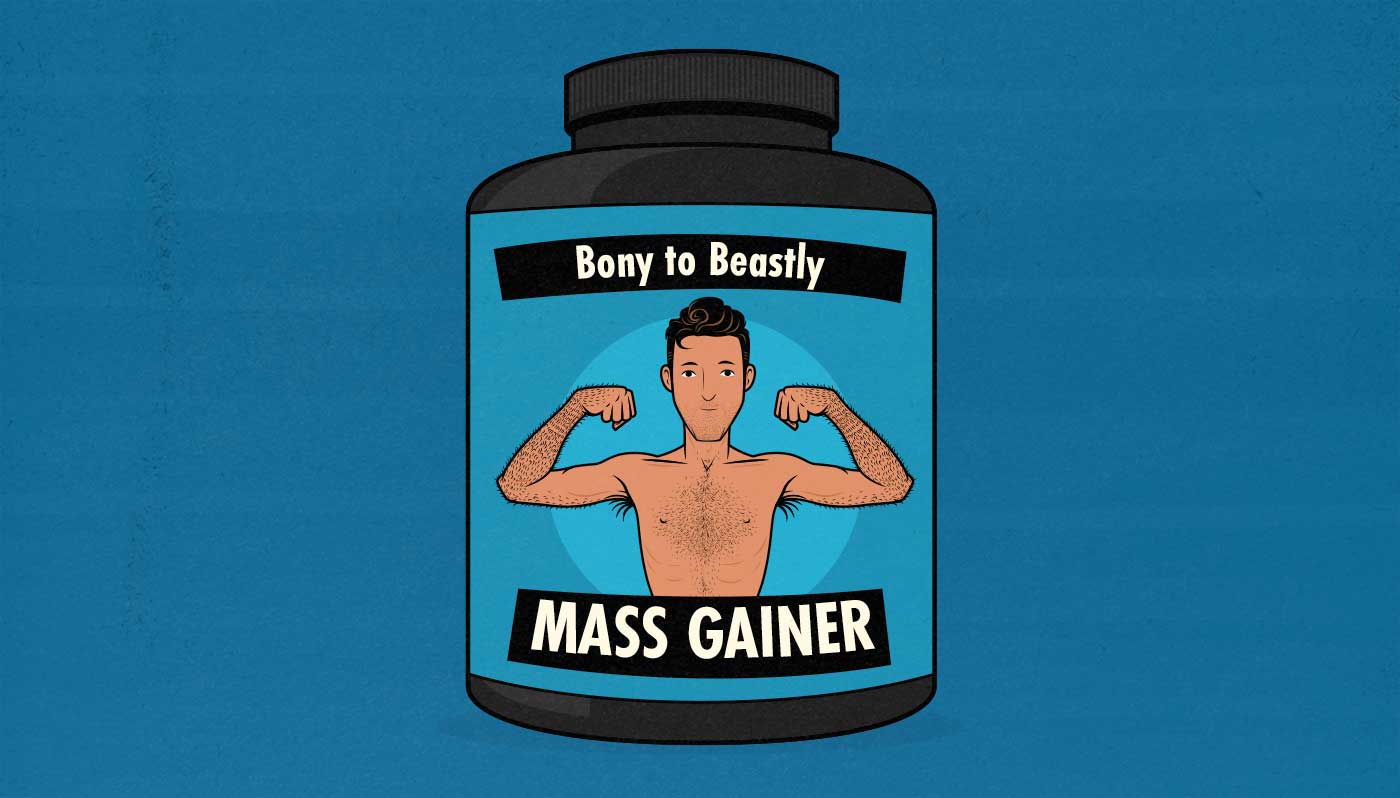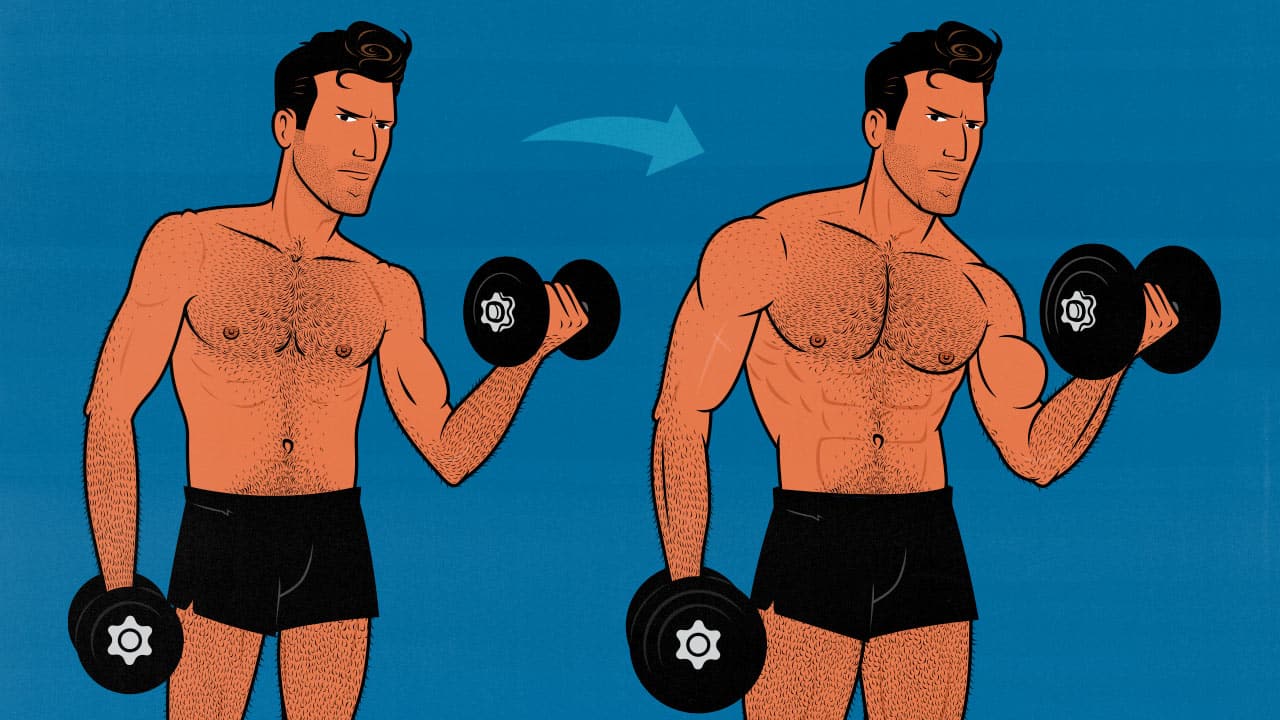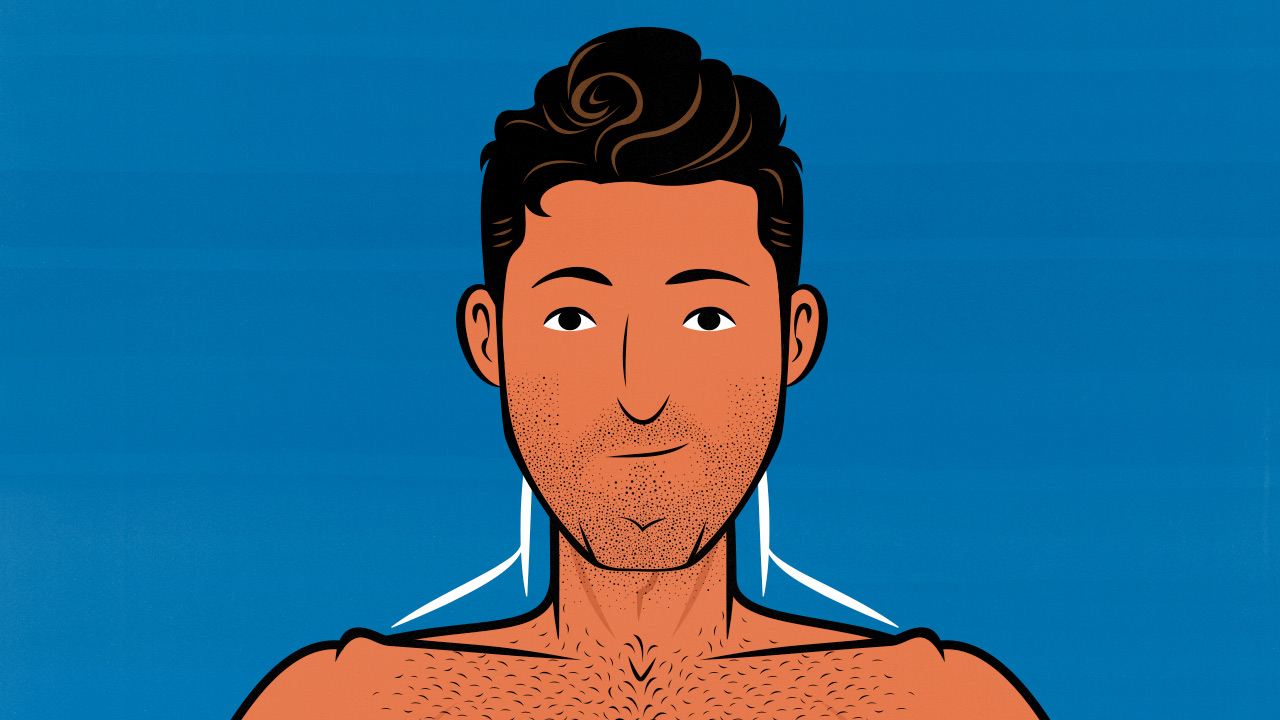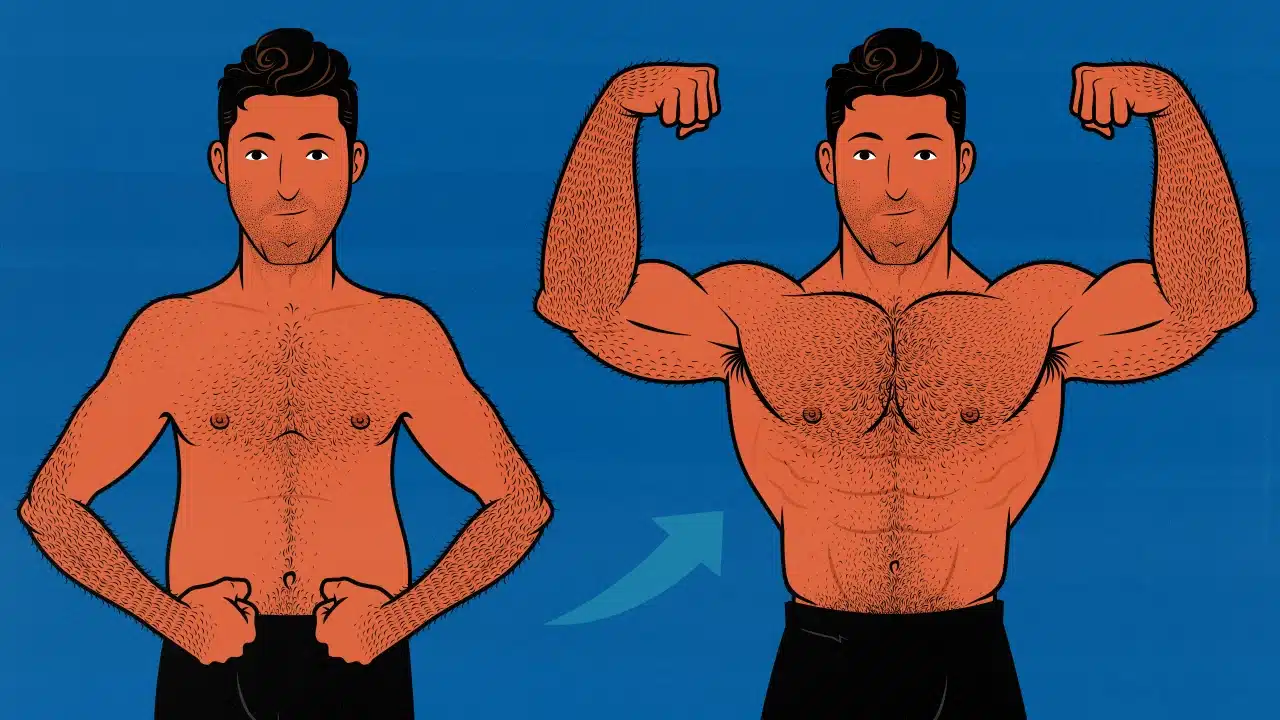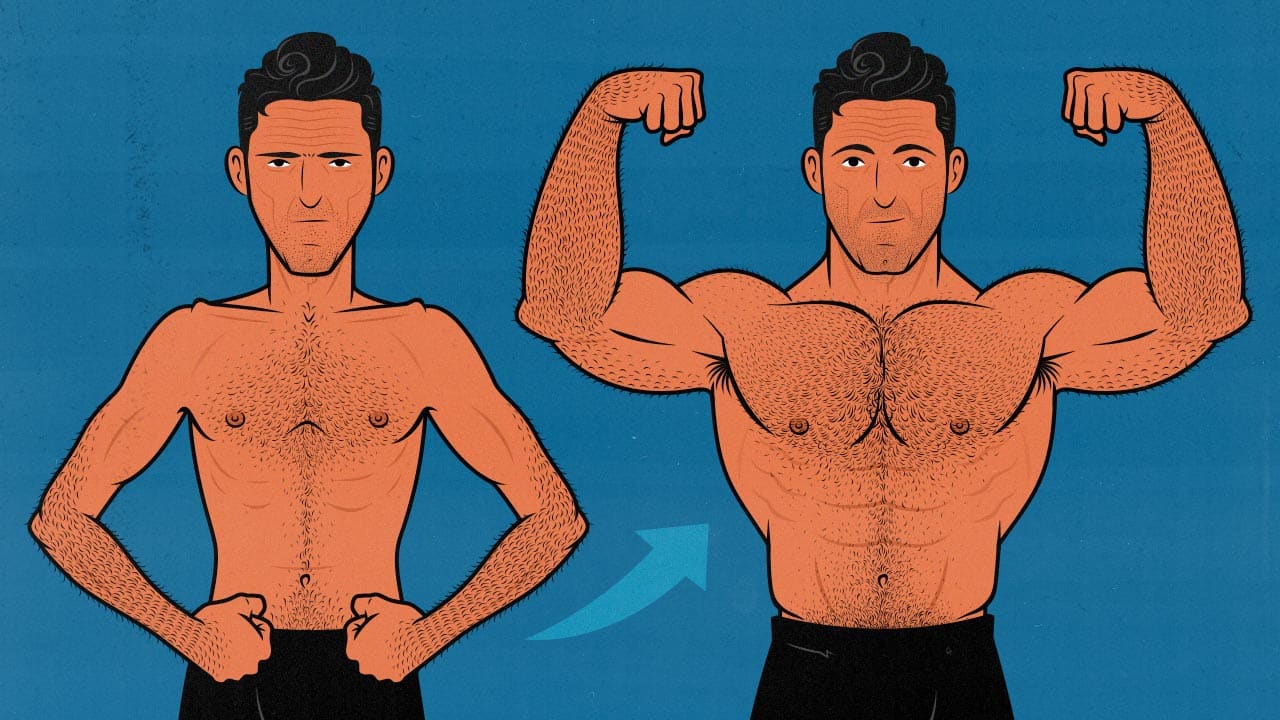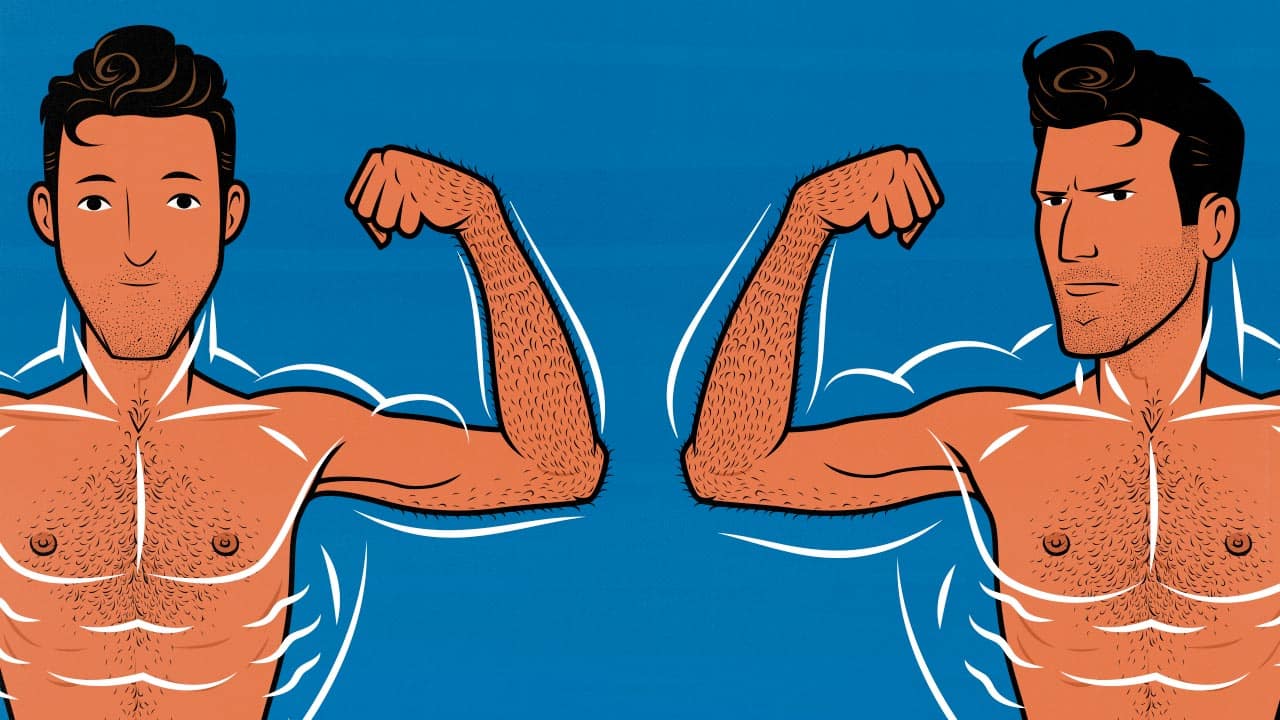Articles
Should Skinny Guys Use Mass Gainers?
Mass gainers, also known as weight gainers, are popular with skinny guys trying to bulk up. They’re especially popular with “hardgainers” whose metabolisms make it difficult to gain weight. I’m a naturally skinny guy myself, and I’ve always found it nearly impossible to get into a sustainable calorie surplus.
I’ve experimented with my fair share of mass gainers. I’ve tried all the popular brands, I’ve made my own homemade shakes from whey protein and maltodextrin, and I’ve tried all sorts of thousand-calorie bulking shakes. That’s how I gained my first 50 pounds.
So, do mass gainers work? Are they healthy? Do they cause excess fat gain? And, if you’re a skinny guy struggling to gain weight, should you use them?
Read MoreThe Muscle-Building Workout Plan for Skinny Beginners
Most skinny guys are eager to build muscle fast. I don’t blame them. I was the same way. When I weighed 130 pounds, with a BMI under 17, I was sick of being skinny. I wanted to get out of that situation as quickly as possible.
The best way to build muscle is to lift weights. Most of us know that. But I had just graduated from university with a degree in graphic design, I’d never been active, and I didn’t know a single person who lifted weights. Well, I knew one person who shoplifted, but I didn’t want any part of that. And when you’re that far outside of a subculture, it can be hard to know where to start or what to do.
Since then, I’ve gained 70 pounds, going from a 65-pound bench press to a 315-pound bench press. My business partner, Marco, has helped college, professional, and Olympic athletes bulk up. Together, we’ve spent over a decade helping millions of readers and over 10,000 skinny clients build muscle (naturally).
Fortunately, once skinny guys start following a good workout plan and eating a proper bulking diet, we can gain muscle faster than any other body type. Our frames are empty and eager for muscle growth. Most of us are able to gain 25 pounds within our first 6 months of working out. Some of our clients have gained 40.
In this article, I’ll walk you through the process of training for muscle growth. By the end, you’ll know exactly what to do.
Read MoreHow to Build a Thicker Neck (Even if It’s Skinny)
I always hated how skinny my neck was. When I was at my skinniest, my neck circumference was 14 inches. After bulking up and gaining 60 pounds, it grew to 14.25 inches. Clearly, the compound lifts I was doing weren’t developing my neck muscles.
That’s where neck training comes in. Neck training isn’t common with bodybuilders, strongmen, or powerlifters, but it has a long history in contact sports and martial arts, given that it reduces the risk of concussions, knockouts, and brain trauma. That’s Marco’s area of expertise. Before founding Bony to Beastly, he was training college, professional, and Olympic football and rugby players.
Still, I was skeptical about how effective a neck workout routine could be. That skepticism didn’t last. With just a few months of doing 5-minute neck workouts, my neck grew from 14.25 to 16 inches. We’ve reproduced those results with several dozen clients. We’ll show you exactly how to do it.
Read MoreThe Skinny Fat Workout & Diet Guide
Skinny fat is when you’re overfat but undermuscled, giving you a normal BMI but an unhealthy body composition. It’s when you’re not quite fat but not quite skinny, either.
The good news is you aren’t overeating or undereating, so you won’t need to force yourself to eat more food (bulking) or less food (cutting). That’s the hardest part of any physique transformation. You don’t need to worry about that. Not yet, anyway.
Instead, the best way to get rid of skinny fatness is to improve your nutrient partitioning. You need body recomposition. There are a few methods that can help with that: following a good workout program, eating a good diet, living a good lifestyle, and getting enough good sleep. Each can work on its own, but combining them all together works much better.
Read MoreWhat is Skinny Fat? And How to Know If You Are
“Skinny fat” is when you have a “skinny” amount of muscle combined with a “fat” amount of body fat. It has a specific look to it. Fat accumulates around your abs and organs, giving you skinny arms and legs with a belly.
In the research, it’s usually called normal-weight obesity, and it comes along with a few health problems (study). Having less muscle means less strength, bone density, and less blood sugar control. Having too much fat means hampered hormone production, a higher risk of heart disease, and, again, worse blood sugar control.
There’s a heritable component to skinny fatness. Indians and other South Asians are particularly predisposed to it (study). It seems that people with an ancestral history of enduring famines develop a tendency to store more body fat, becoming overfat even when they aren’t overweight. That might sound bad, but remember that most people are overfat and overweight, which is worse.
Skinny fatness isn’t your genetic destiny. It’s what happens when you get out of shape. That means you can get rid of it. There are a few different ways to do that, and you can combine them all together to get rid of your skinny fatness even faster.
The good news is that because your body weight isn’t a problem, you won’t need to manipulate your calorie intake very much, which is usually the hardest part of building muscle and burning fat.
There’s also an easy way to tell if you’re skinny fat. All you need is a measuring tape.
Read MoreHow to Bulk: the Complete Beginner Guide
Bulking is often derided as the fool’s way of building muscle. That’s true on average. Most people are already overweight. The last thing they need is more weight. But if you’re thin, underweight, or lean, bulking is by far the best way to build muscle.
In this guide, we’ll teach you exactly how to bulk.
Delve DeeperThe Best Fast Food Restaurants for Bulking
We get this question a fair bit. Most people associate fast-food restaurants with processed junk food, but that only describes some of them. If you want to get a healthy, high-calorie bulking meal from a fast-food restaurant, you can. There are some really good options.
Read MoreHow Age Affects Muscle Growth
We’ve helped 15,000 skinny people bulk up, ranging from 18 to 80 years old. Marco has coached college, professional, and Olympic athletes revelling in the peak of their athletic performance. He’s also coached sedentary desk workers in their 20s, 40s, 60s, and 80s.
What we’ve seen matches what we see in the research, and what the research shows is shocking. We have pictures. You’re going to love this.
Read MoreHow Often Should You Lift Weights to Build Muscle?
Most guys assume that training more often stimulates more muscle growth. If that were true, then to build muscle faster, you’d train as often as possible—maybe as many as 5 or even 6 days per week. To do any less would be to miss out on muscle gains.
That’s the wrong way to think about it.
Read MoreHow to Make High-Calorie Bulking Smoothies (to Gain Weight)
When you blend whole foods into smoothies, they keep their nutritional value, they get quicker to prepare and eat, and they don’t leave you feeling as full. That’s why they’re so popular in the fitness industry. Smoothies are the easiest way to consume several servings of protein, fruits, veggies, omega-3s, phytonutrients, and fibre.
If you make a high-calorie bulking smoothie, it can shift you into an effortless calorie surplus, making it much easier to gain weight (study). We’ve used these smoothies to gain nearly 70 pounds each. We’ve also used them with thousands of clients, ranging from everyday people all the way up to professional and Olympic athletes.
Read More
